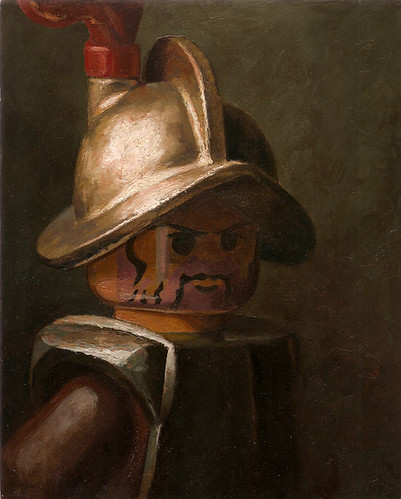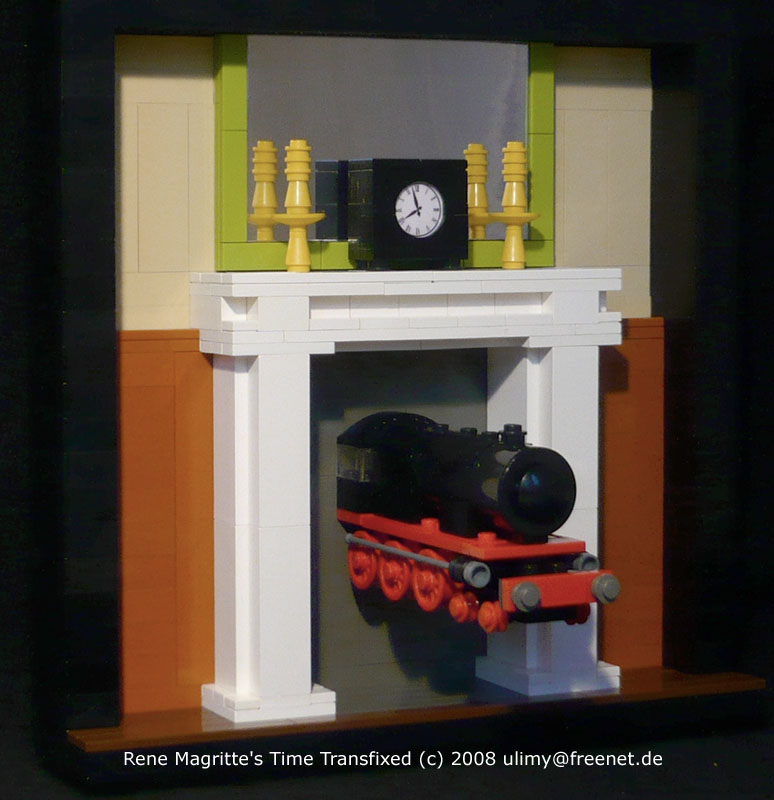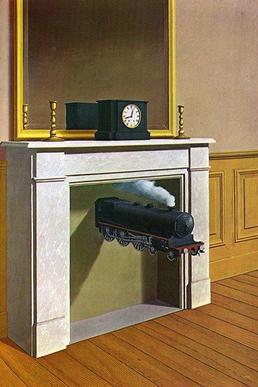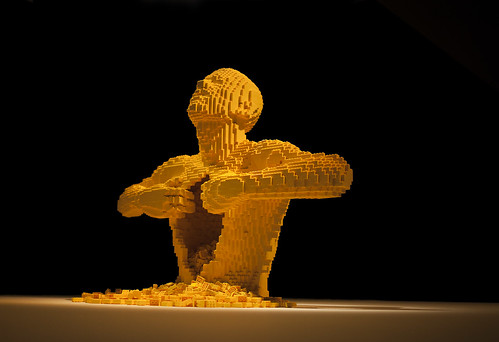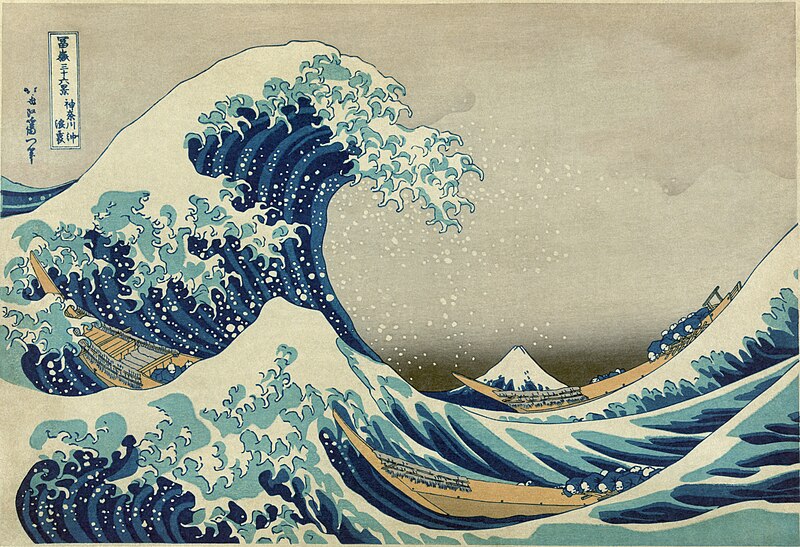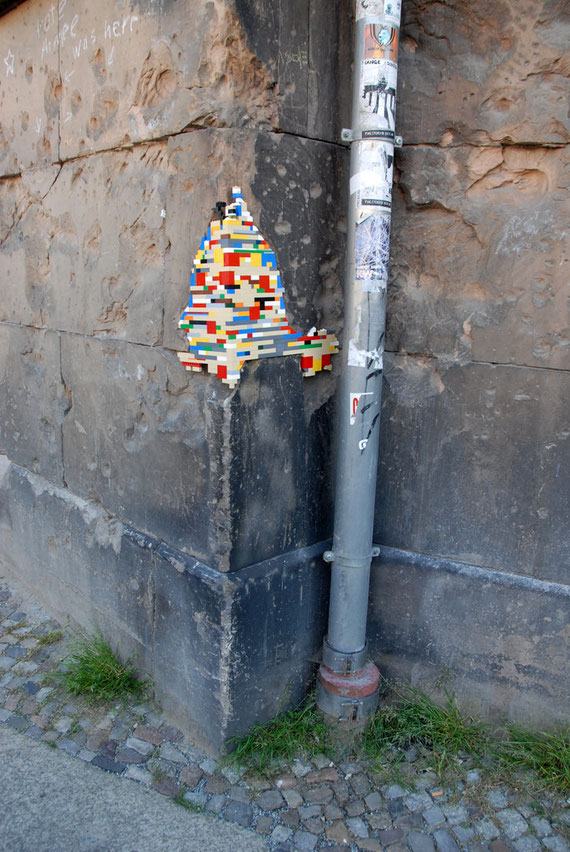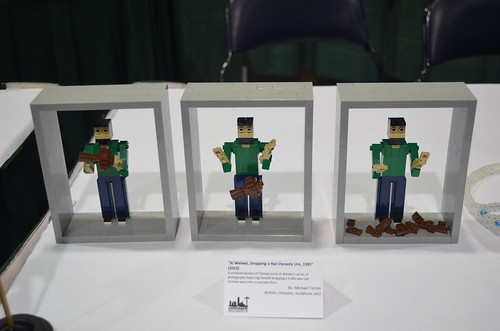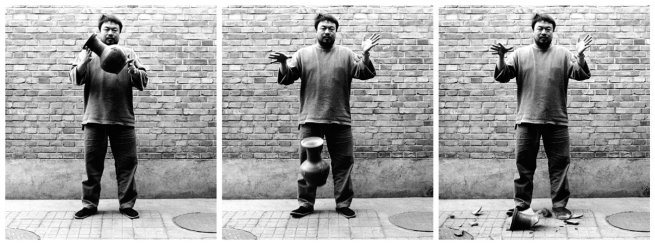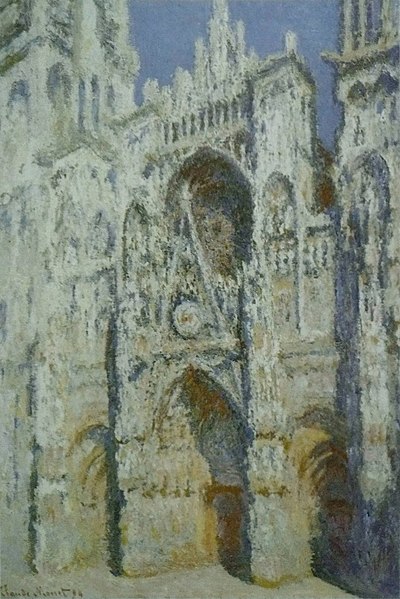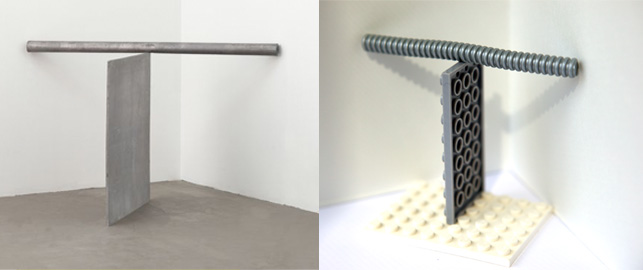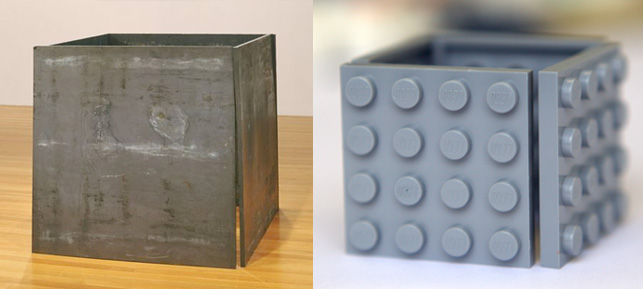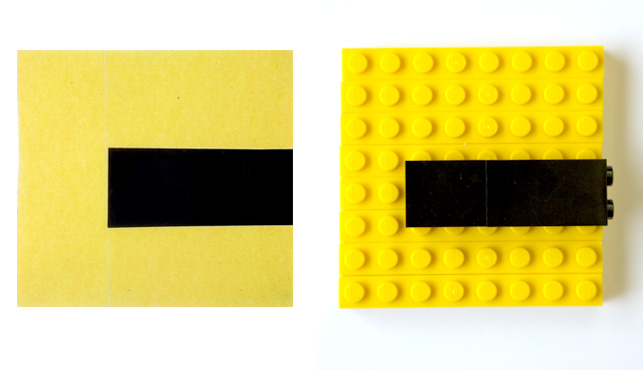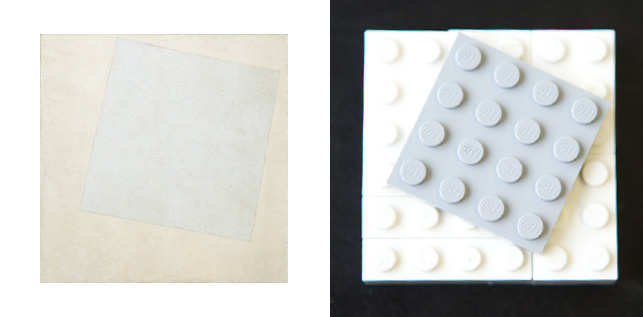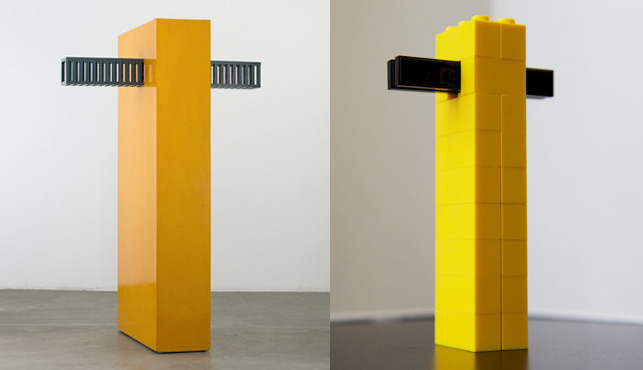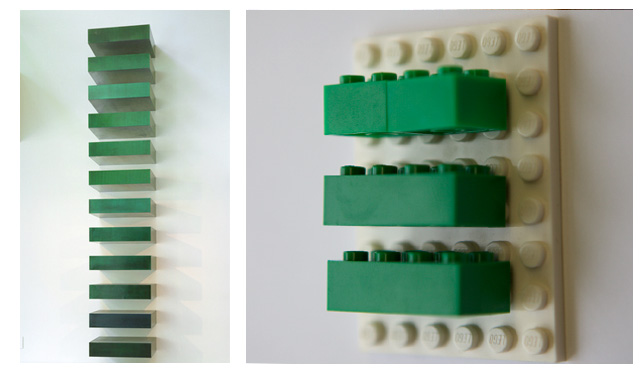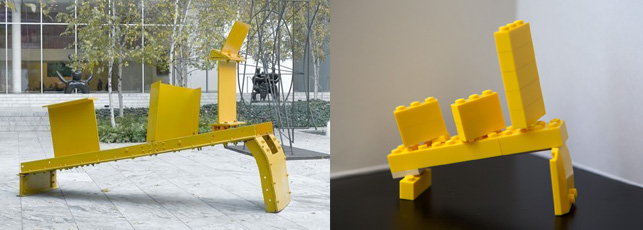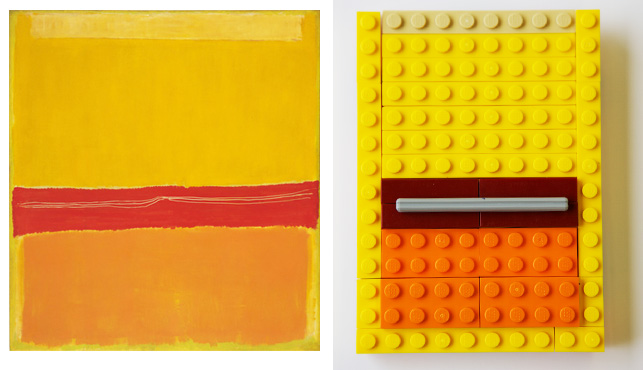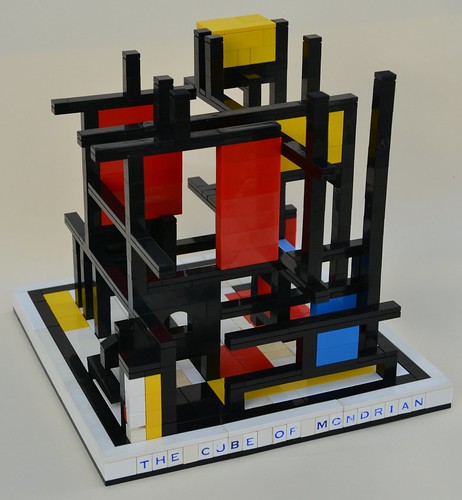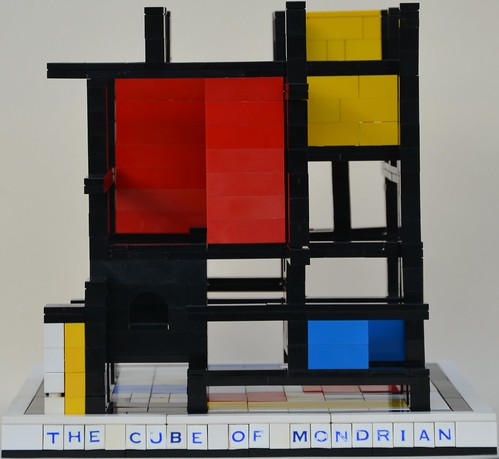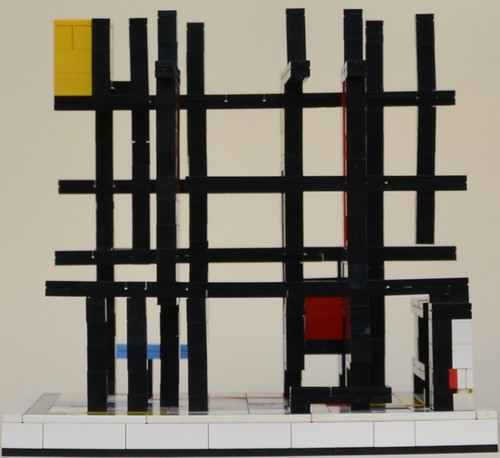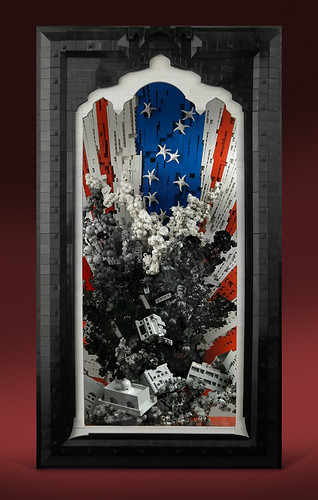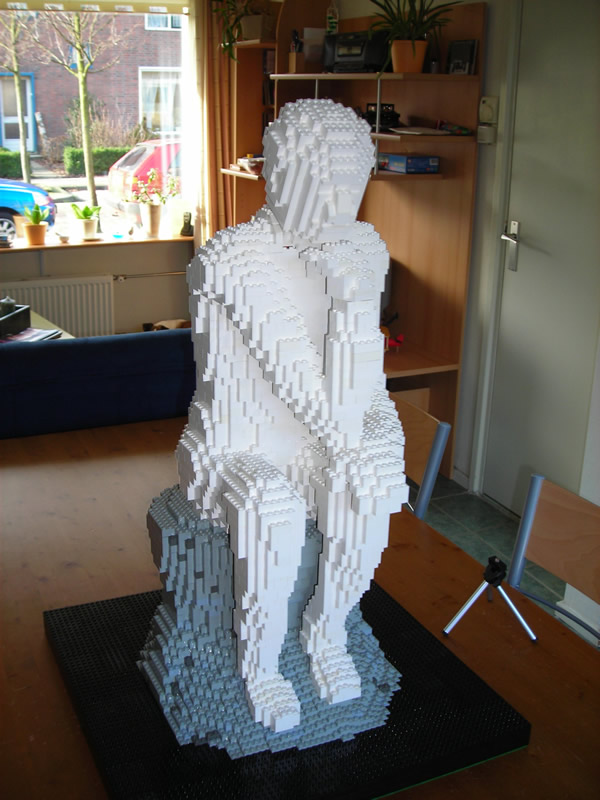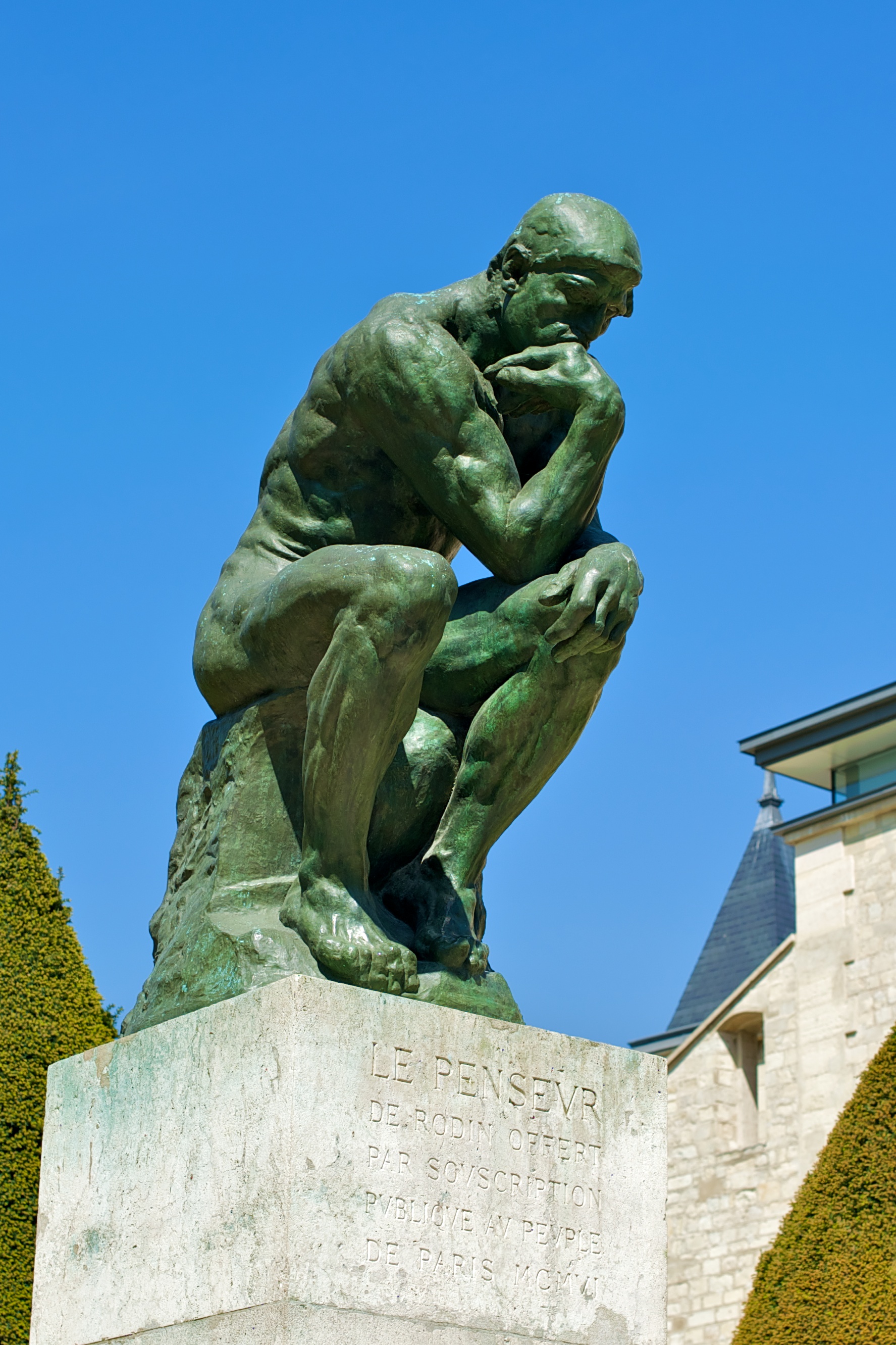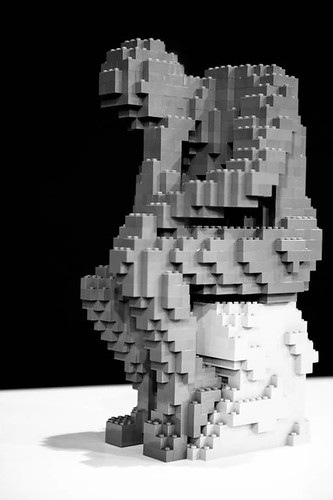From time to time I'm going to use this space to muse on the questions raised by LEGO and art. I should give a caveat up front that I have absolutely no training (I'm a scientist, for pete's sake), and so I'm sure many would reject my thoughts up front, but I'll take the risk. I wanted to share a couple of related anecdotes, that show where I and my wife differ on some related questions. One time when we were first dating, I told her about going to this birthday party, and when they sang 'Happy Birthday' it was really cool, because a bunch of the people there were 'musicians', and instead of the normal slightly off-key version of the song, there were all of these cool harmonies going on. She really took exception to my description of the group, and still kids me about this many years later. See, when she hears the term 'musician', she thinks of a friend of hers who is a pretty amazing violinist. He studied at Juliard, was at one point tutored by Itzhak Perlman, and currently is a professor in a prestigious university music program. The people I was talking about were all amateurs - the party was for a friend who played guitar in a band and also for our church, so a good portion of the people there were the members of his band and people from the music team at our church. She just thought it was completely wrong for me to refer to people for whom music was a side hobby as 'musicians'. Or, in a related area, I am by all descriptions a scientist - I have a PhD, I teach college chemistry, and I pursue research. Sometimes, I will refer to my students as 'scientists' or 'chemists', and, again, my wife objects. Her view is that these people are at such a beginning stage, and many of them will not go on into careers in science, and so you can't call them 'scientists'. To be fair, she also says that she is no longer a 'scientist', even though she has the exact same degree as me from the same institution (yes, we met in the lab, insert your joke about us having 'good chemistry' here), because she now works in a more administrative/business role, and has not been in an actual lab or classroom in a long time. So we have two views - she insists on using terms like 'musician', 'scientist', or, back to the point of this blog, 'artist' exclusively for people with a very high level of training and expertise who are professionally pursing those pursuits. I would use those terms for people of greatly varying levels of skill who are currently involved in that pursuit, for whatever reason. So, if I pick up a paintbrush, at that point I am acting as an 'artist'. I'm certainly not a
good artist, and no one's going to hang my scribble-scrabble* in a museum, but for a short time I am acting as an artist. I think both my and my wife's views have merit, and there are many who will fall on either side of that description. As we approach the creation of 'LEGO art', my view is going to be that if the person is trying to create art, then they are. Now, it might be really bad art, and that's going to be a different question. Anyway, I'd love your thoughts on what makes an artist.
BTW, somewhere there's an essay, I believe by Robert Fulghum (it's probably in his 'All I Really Needed to Know' collection, as I used to own that) that basically says how we all start out believing we're artists, singers, architects, dancers, scientists, etc, but somwhere along the way we're told that we're not. I tried to find the essay to link here, but couldn't. I'd really appreciate it if anyone could point me to it. I did find a great quote from Picasso with a similar theme: "All children are artists. The problem is how to remain an artist once he grows up."
*'Scribble-scrabble' was my 5-year-old's dismissive description of her 3-year-old brother's crayon masterpiece in comparison to her own. Both drawings went up on the fridge. :)

